Tramadol withdrawal-Holistic rehab in Thailand
Tramadol withdrawal
“Turning the impossible into possible”

"Detox from Drugs at a Luxury Holistic Center in Thailand and Israel"

Tramadol withdrawal-Holistic rehab in Thailand
Tramadol acts as a partial agonist at opioid receptors, specifically at μ (mu) receptors. It also inhibits the reuptake of norepinephrine and serotonin in the central nervous system, which adds to its analgesic effect.
"Holistic Center for Trauma, Addiction, and Mental Imbalance Treatment in Thailand"
“Come to the beginning of your journey to freedom from addiction to alcohol, drugs, and pills, and rediscover your life within the serene embrace of DaoTherapy Rehab in Thailand—where holistic healing meets empowering recovery.”
DaoTherapy Holistic Rehab
Key Elements of Drugs Detox:
Medical Supervision: Drugs detox must be conducted under medical supervision, as the body may experience withdrawal symptoms. These can include nausea, anxiety, muscle aches, and insomnia. A medical team will monitor and manage these symptoms to ensure the patient’s safety and comfort.
Holistic Therapies:
Holistic Therapies: Many detox programs incorporate holistic therapies such as mindfulness, yoga, and meditation to help individuals cope with stress and anxiety during the detox process. These therapies support the mind-body connection and contribute to overall recovery.
Tapering Process
Tapering Process: Drugs detox often involves a gradual tapering of the drug to reduce withdrawal severity. Doctors will slowly decrease the dosage over time to allow the body to adjust to lower levels of the substance.
Psychological Support:
Psychological Support: Like any addiction recovery process, detox from Drugs includes psychological support. This can involve counseling, therapy, or support groups to address the mental and emotional aspects of addiction.
Post-Detox Treatment:
Post-Detox Treatment: After completing detox, continuing treatment is crucial to prevent relapse. This often includes participation in ongoing therapy, group support, and the development of new coping strategies to maintain sobriety.
A historical overview of the development of tramadol and its use:
Tramadol is an opioid analgesic used medically to relieve moderate to severe pain. Here is some historical background on the drug:
Development and History
1. Development and Patent:
– Tramadol was developed by the German pharmaceutical company Grünenthal GmbH.
– The first patent for tramadol was registered in 1963 by Hermann Grünenthal.
2. Approval for medical use:
– The drug entered the European market in the 1970s.
– In the United States, tramadol was only approved for medical use in 1995.
Mechanism of Action
Tramadol acts as a partial agonist at opioid receptors, specifically at μ (myo) receptors. It also inhibits the uptake of norepinephrine and serotonin in the central nervous system, which adds to its analgesic effect.
Medical Uses
Tramadol is used to relieve moderate to severe pain, including chronic pain and acute pain after surgery. It is available in various forms, including tablets, capsules, drops, and injectable ampoules.
Side Effects and Addiction
Like other opioid analgesics, tramadol can cause side effects such as dizziness, nausea, constipation, and, in rare cases, serious symptoms such as cramps. There is a risk of addiction to tramadol with prolonged use, so it is important to use it under close medical supervision.
Legal Status
In many countries, including the United States, tramadol is classified as a controlled substance and is regulated due to the risk of addiction and abuse.
Tramadol continues to be widely used in the medical world, mainly because it is an effective pain reliever with a relatively lower risk of addiction compared to other strong opioids.
Tramadol Withdrawal: What you need to know about Tramadol Withdrawal, What are the causes of addiction to prescription pills:
The causes of addiction to prescription drug dependence are complex and vary from person to person, and include a combination of genetic, psychological, environmental, biological and personal factors.
Genetic factors:
Genetic predisposition: Some people are born with a genetic predisposition to addiction. Studies show that there is a genetic inheritance that increases the risk of addiction.
Families with a history of addiction: Those who have parents or first-degree relatives who have struggled with addiction to prescription pills may be at higher risk of addiction.
Doctor-ordered treatment to prevent pain and addiction while developing tolerance and increasing use of the prescription medication
Subutex withdrawal: Psychological factors:
Mental disorders: People suffering from depression, anxiety, personality disorders, or post-traumatic stress disorder (PTSD) may turn to drugs to cope with the symptoms of these conditions.
Low self-esteem: A sense of low self-esteem can lead to drug use as a way to escape a painful reality or improve a sense of self-worth.
Stress and mental strain: People experiencing chronic stress or increased mental strain may use drugs to relieve stress.
Feelings of inferiority and dysfunction are another psychological factor that can contribute to addiction to prescription pills. We will detail this in the context of psychological factors for addiction:

contact us
Contact us with your questions
We would love to speak with you! Feel free to reach out with any questions.

get in touch
Schedule a free consultation
Schedule a free consultation with our team and let’s make things happen!
Characteristics of Tramadol addiction:
Tramadol addiction, like any other opioid, is a complex phenomenon that includes physical and psychological characteristics. Here are the main characteristics of tramadol addiction:
Physical characteristics
1. Tolerance: The need to increase the dose to achieve the same pain-relieving effect, because the body gets used to the initial doses.
2. Withdrawal symptoms: When tramadol is stopped suddenly, symptoms such as nausea, sweating, tremors, muscle pain, anxiety, and depression may occur.
3. Increased use: A tendency to take more than the recommended dose or to use it more frequently than prescribed by the doctor.
Mental and behavioral characteristics
1. Constant drug seeking: Dedicating a lot of time and effort to obtain tramadol, including frequent visits to different doctors or illegal purchases.
2. Loss of control: Inability to stop or reduce use despite attempts to do so.
3. Neglect of daily activities: Neglect of work, school, or family obligations due to tramadol use.
4. Mood swings: Extreme mood swings, including feelings of euphoria following use or depression and anxiety when the drug is not available.
5. Excuses and cheating: Making excuses or cheating to justify use or to obtain a new prescription.
Main withdrawal symptoms
1. Physical: Body aches, diarrhea, vomiting, profuse sweating, muscle cramps, rapid heart rate.
2. Mental: Anxiety, irritability, depression, feeling restless, inability to concentrate.
Health risks
The prolonged and uncontrolled use of tramadol can lead to serious health damage, including liver and kidney damage, an increased risk of accidents and injuries due to side effects such as dizziness or drowsiness, and a risk of serotonin syndrome due to the drug’s action on the serotonin system in the brain.
Addiction treatment
Treatment for tramadol addiction usually includes a combination of medications to reduce withdrawal symptoms, psychological treatment and psychotherapy, and social support. In many cases, professional intervention is needed in a dedicated treatment setting for addiction rehabilitation.
Common side effects:
Tramadol, like any opioid drug, can cause various side effects, some of which may be more serious than others. Here is a description of the common and less common side effects:
Common side effects
1. Nausea and vomiting: The most common side effects of tramadol use.
2. Constipation: A common problem with prolonged use.
3. Dizziness: May cause a feeling of unsteadiness and fear of falling.
4. Headaches.
5. Dry mouth.
6. Increased sweating.
7. Drowsiness: Increased feeling of tiredness.
8. Pruritus: Itchy skin.
Less common side effects
1. Feeling confused.
2. Mood swings: Including feeling euphoric or depressed.
3. Anxiety and irritability.
4. Chronic fatigue.
5. Hallucinations: Seeing or hearing things that are not there.
6. Sleep disturbances: Including insomnia (lack of sleep) or nightmares.
Serious side effects
1. Difficulty breathing: Decreased breathing rate or shallow breathing.
2. Seizures: Tramadol may increase the risk of seizures, especially at high doses.
3. Serotonin syndrome: A serious condition resulting from increased serotonin levels in the brain, characterized by symptoms such as hallucinations, mental instability, rapid heart rate, high fever, and sweating.
4. Serious allergic reactions: Including swelling of the face, lips, tongue, or throat, and difficulty breathing.
5. Low blood pressure: Feeling dizzy or faint, especially when standing up quickly.
Cardiovascular side effects
1. Fast or slow heartbeat.
2. Increased or decreased blood pressure.
3. Chest pain.
Nervous system side effects
1. Difficulty concentrating.
2. Changes in taste.
3. Tingling or numbness in the extremities.
Gastrointestinal side effects
1. Diarrhea.
2. Abdominal pain.
3. Decreased appetite.
Rare side effects
1. Immunosuppression: Decreased ability of the body to fight infections.
2. Liver and kidney problems: Including increased liver enzyme levels or impaired kidney function.
Important notes
Many side effects can be worsened by combining tramadol with other drugs, especially drugs that affect the central nervous system, such as sleeping pills, tranquilizers, and antidepressants. It is important to inform your doctor about all medications taken at the same time as tramadol.
Physical withdrawal symptoms from tramadol:
Tramadol withdrawal symptoms can be severe and varied, affecting both the body and the mind. Here is a description of the main withdrawal symptoms:
Physical withdrawal symptoms
1. Muscle and joint pain: Feeling of pain and fatigue in the muscles and joints.
2. Excessive sweating: Sweating heavily, especially at night.
3. Tremors: Shaking in the hands or the whole body.
4. Nausea and vomiting: Feeling of constant nausea and sometimes vomiting.
5. Diarrhea: Gastrointestinal symptoms such as diarrhea.
6. Rapid heart rate: Feeling of rapid heartbeat.
7. High blood pressure: Increased blood pressure.
8. Sleep disturbances: Difficulty falling asleep or having irregular sleep.
Mental withdrawal symptoms
1. Anxiety: Feeling of increased anxiety.
2. Depression: Feeling depressed and sad.
3. Irritability: Irritability or impatience.
4. Restlessness: Feeling restless or restless.
5. Hallucinations: Visual or auditory hallucinations can sometimes occur.
6. General malaise: A general feeling of discomfort, like a severe “flu.”
General withdrawal symptoms
1. Cravings: A strong feeling of malaise and a strong desire to use the drug again.
2. Decreased appetite: Loss of appetite and weight loss.
3. Chronic fatigue: A feeling of constant fatigue and general weakness.
4. Headaches: A feeling of a constant headache.
Additional symptoms
1. Abdominal discomfort: Abdominal pain and a general feeling of discomfort in the abdomen.
2. Irregular heartbeat: Changes in heart rate.
Important Notes
Duration and intensity of symptoms: Withdrawal symptoms may last several days to weeks, and their intensity varies from person to person depending on the amount of use and the length of time the drug was taken
Risk of self-withdrawal: Stopping tramadol use abruptly without medical supervision may be dangerous. It is recommended to consult a doctor in order to manage a controlled and safe withdrawal program.
Medical and psychological support: Medical and psychological support is often needed during withdrawal, including the use of medications to relieve withdrawal symptoms and psychotherapy.
Proper management of the withdrawal process is critical to success and to preventing health and mental complications.
Prescription drug withdrawal treatments that exist:
Prescription Drug Withdrawal Methods Around the World
1. Medical Detoxification
Controlled Process: Medical detoxification is the first step in the addiction treatment process. During this process, the use of prescription drugs is stopped under medical supervision, while medications are given to relieve withdrawal symptoms.
Symptom Relief: Medications given can include anxiety-relieving, pain-relieving, and seizure-preventing medications.
2. Psychotherapy Treatment Using the Tau Therapy Method
Cognitive-Behavioral Therapy Using the Tau Therapy Method: This treatment focuses on identifying and changing negative thought and behavior patterns related to addiction.
Behavioral Therapy Using the 12-Step Approach: Used primarily to treat addicts with personality disorders, and teaches coping skills and emotional improvement.
Psychodynamic Therapy: Focuses on exploring the emotional connections and early experiences that led to addiction.
3. Group Therapy and Social Support
Support Groups: Groups such as Narcotics Anonymous (NA) and Alcoholics Anonymous (AA) offer support from former addicts through regular meetings.
Family Therapy: Involves the family in therapy to improve family relationships and support.
4. Alternative and Complementary Therapy from Taotherapy
Meditation and Yoga: These methods help reduce stress, anxiety, and improve self-awareness.
Acupuncture: Often used to reduce withdrawal symptoms and drug cravings.
Proper nutrition and exercise**: Improve overall health and help the body recover.
5. Rehabilitation Programs
Inpatient Rehabilitation Centers: Patients are in a treatment center under full supervision, receiving psychological, medical, and
support care.
Outpatient Rehabilitation: Patients continue to live at home but come to the rehab center for treatment and training.
6. Innovative Technologies
Biofeedback: This technology helps patients learn to control physical reactions and reduce stress.
Virtual Reality Therapy: Virtual reality therapy to recreate situations that trigger drug cravings and learn to cope with them.
7. Holistic and Spiritual Methods
Art and Music Therapy: Used for emotional expression and processing experiences.
12-Step Programs**: Based on spiritual principles and focused on personal responsibility and group support.
Summary
Drug detoxification methods are diverse and vary according to the patient’s needs and local policies. Different approaches are often combined to achieve optimal results, taking into account the patient’s physical, mental, and environmental conditions.
Psychological Support:
Psychological Support: Like any addiction recovery process, detox from Subutex includes psychological support. This can involve counseling, therapy, or support groups to address the mental and emotional aspects of addiction.
Taotherapy is a multidisciplinary treatment method that focuses on treating addictions:
Taotherapy is a multidisciplinary treatment method that focuses on treating addictions and mental health problems through a holistic approach combined with spiritual, psychological and physiological principles. The method is based on principles of the Chinese philosophy of “Tao”, which emphasizes balance and harmony between the body, mind and spirit. Here is an overview of the Taotherapy method for addiction recovery and treatment:
Basic principles of Taotherapy
1. Balance and harmony:
– Taotherapy focuses on achieving balance and harmony between all components of the person: body, mind and spirit. The assumption is that an imbalance between these components leads to addictions and mental health problems.
2. Tao principles:
– The method is based on the principles of Tao (Way), which guide the patient to strive for a balanced and harmonious life. The Tao philosophy emphasizes living simply, humbly and in accordance with the natural flow of life.
3. Body, Mind, and Spirit:
– Taotherapy sees the person as whole and integrated, and does not focus only on the symptoms of addiction but also on the deeper roots of the problem, such as past traumas, unprocessed emotions, and psychological difficulties.








